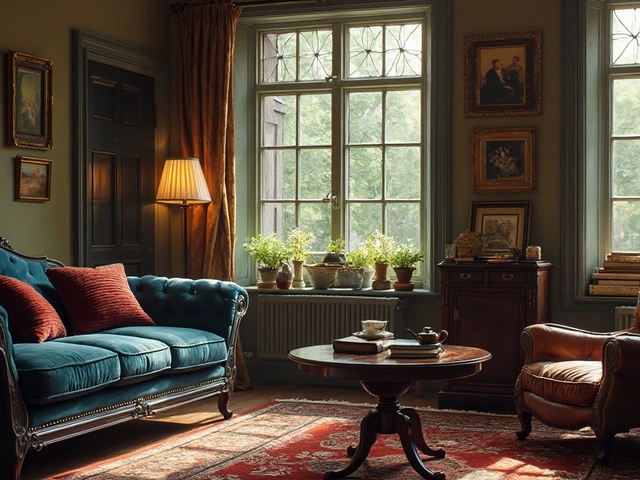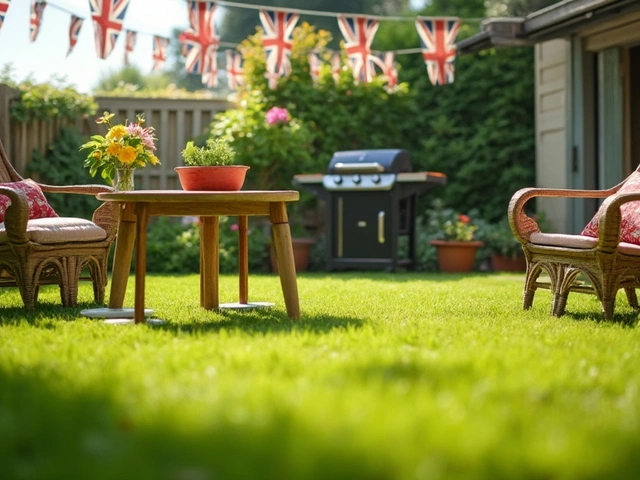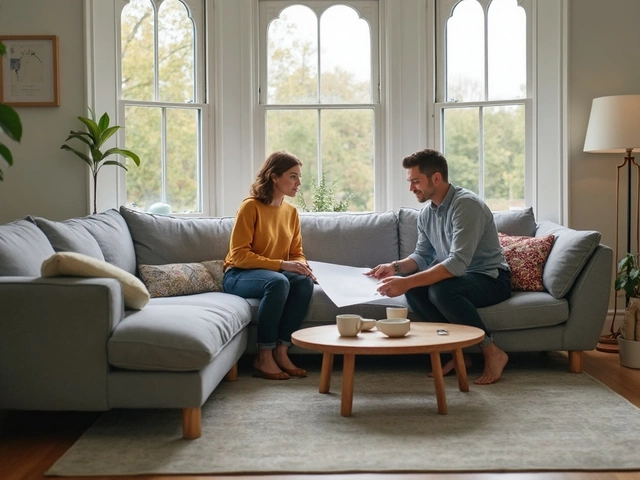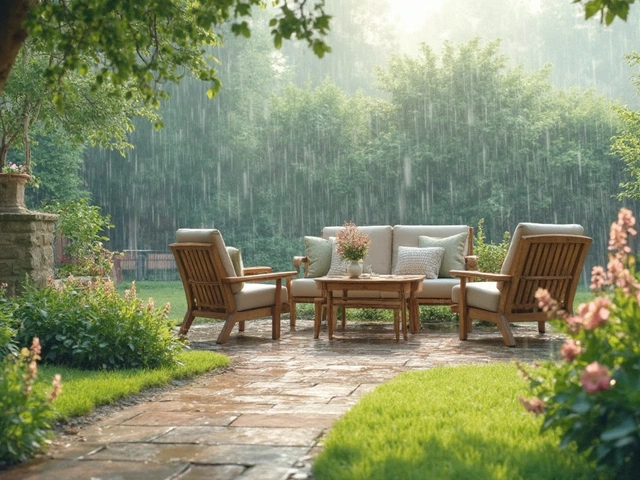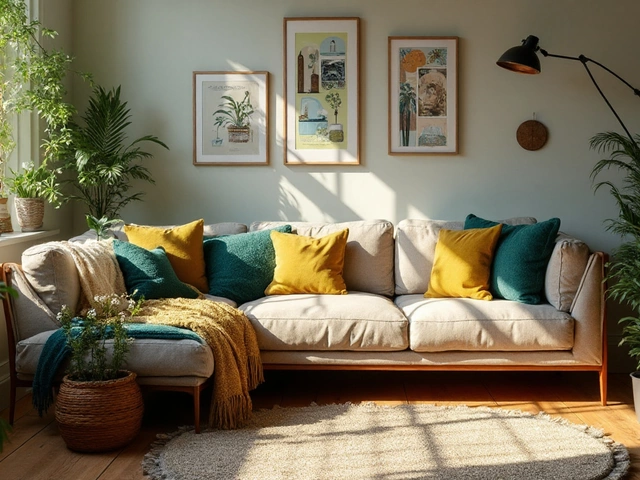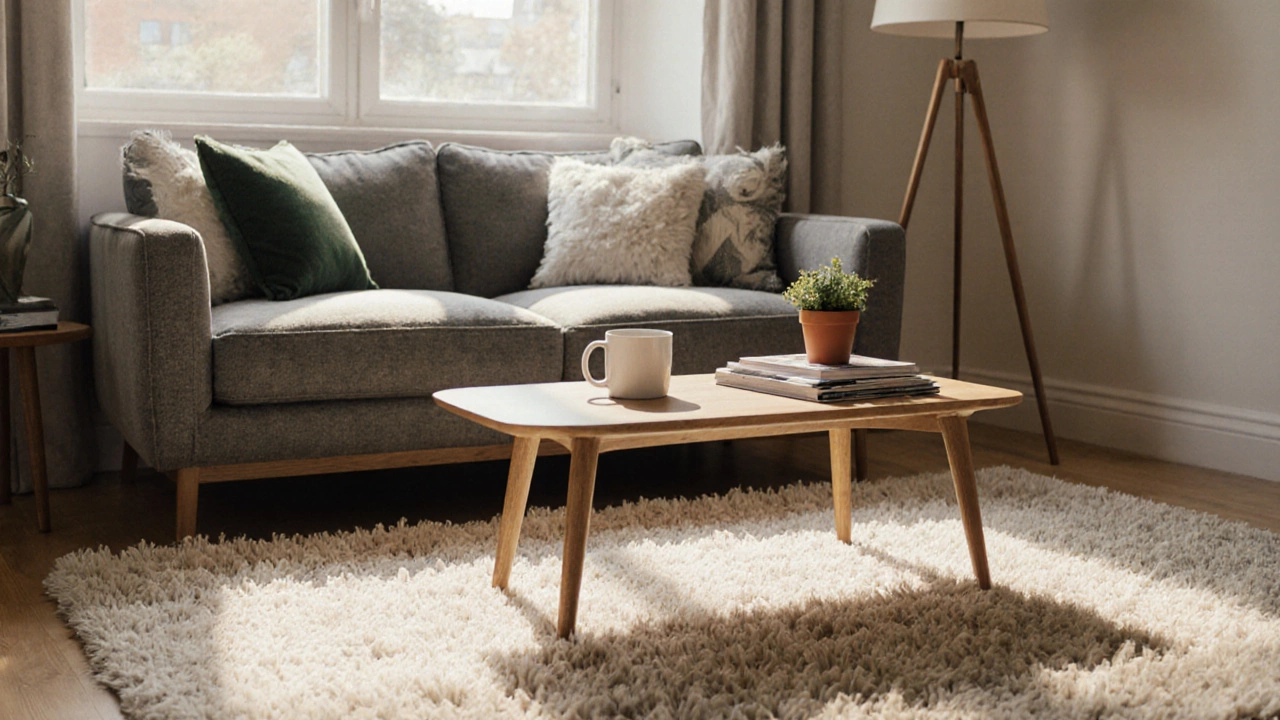 22
Oct,2025
22
Oct,2025
Coffee Table Need Calculator
Let's find out if you need a coffee table
Answer these questions to get personalized advice based on your living room size, usage patterns, and design preferences.
1. How big is your living room?
2. What seating arrangement do you have?
3. How do you use your coffee table space?
4. What's your design style preference?
5. How much walking clearance do you have?
Your Recommendation
0%When you hear the phrase coffee table, you probably picture a low‑sitting wooden slab surrounded by a sofa and a rug. But is that piece of furniture truly essential, or can you skip it without compromising comfort and style? Below we unpack the real purpose of a coffee table, weigh the benefits against the drawbacks, and explore space‑saving alternatives that fit modern living rooms.
What Exactly Is a Coffee Table?
Coffee Table is a low, often rectangular piece of furniture designed to sit in front of a seating arrangement. It typically serves as a surface for drinks, books, remote controls, and decorative items. First popularised in the mid‑20th century, the coffee table has become a staple in Western interior design.
Why People Reach for a Coffee Table
Most living rooms revolve around a seating zone - usually a sofa or sectional. A coffee table offers:
- Convenient placement for drinks and snacks, reducing the need to get up.
- Extra storage for magazines, remote controls, or board games.
- Visual anchor that ties together the sofa, rug, and TV stand.
- Opportunities for decorative styling - books, candles, plants.
These practical and aesthetic roles make the coffee table feel indispensable, especially in larger rooms where a focal point helps organise the space.
When a Coffee Table Can Hold You Back
Despite its usefulness, a coffee table can also create problems:
- Living Room layouts that are already tight may suffer from reduced walking clearance, leading to tripping hazards.
- Modern minimalists often prefer open floor plans; a bulky table can interrupt sightlines and make the room feel cramped.
- Cleaning becomes a chore - spills on a flat surface need immediate wiping, and dust settles quickly on open tops.
- Styling restrictions - a traditional wooden table may clash with contemporary décor, forcing you to pick a piece solely for visual match rather than function.
Evaluating Your Space: Do You Actually Need One?
Before you decide, ask yourself these quick checks:
- Is there at least 45 cm of clear walking space between the sofa and any surrounding furniture? If not, a coffee table could block traffic.
- Do you frequently use the surface for drinks, remote controls, or games? If you mostly rely on a side table or a TV stand drawer, you may not need a dedicated coffee table.
- Does your interior style lean towards open, airy aesthetics? Minimalist designs often replace coffee tables with low‑profile nesting tables or floor cushions.
- Are you dealing with a small apartment or a studio? Multi‑functional pieces might serve you better than a single‑purpose table.
If you answered “yes” to most items, keeping a coffee table makes sense. If not, consider alternatives.
Smart Alternatives for Every Lifestyle
Here are space‑saving options that can replace a traditional coffee table while still meeting functional needs:
| Alternative | Typical Height | Storage | Flexibility | Best For |
|---|---|---|---|---|
| Ottoman with hidden compartment | 45 cm | Yes (lift‑top) | Can be used as extra seating | Living rooms needing extra seats |
| Nesting tables | 40‑60 cm (varies) | No | Can be spread out or stacked | Small rooms, frequent re‑arranging |
| Floor‑level trays | 15‑20 cm | No | Easy to move, can be placed on rug | Low‑profile aesthetic lovers |
| Side table beside sofa | 50 cm | Often yes (drawers) | Fixed, but can serve as lamp stand | Rooms with a single‑seat sofa |
| Built‑in bench with storage | 40 cm | Yes (under‑seat) | Permanent, adds seating | Custom homes, larger living areas |
Choosing an alternative depends on your priorities. If you love storage, an ottoman with a lift‑top may be perfect. If you adore a clean silhouette, a floor‑level tray keeps the floor visible while still offering a place for a drink.
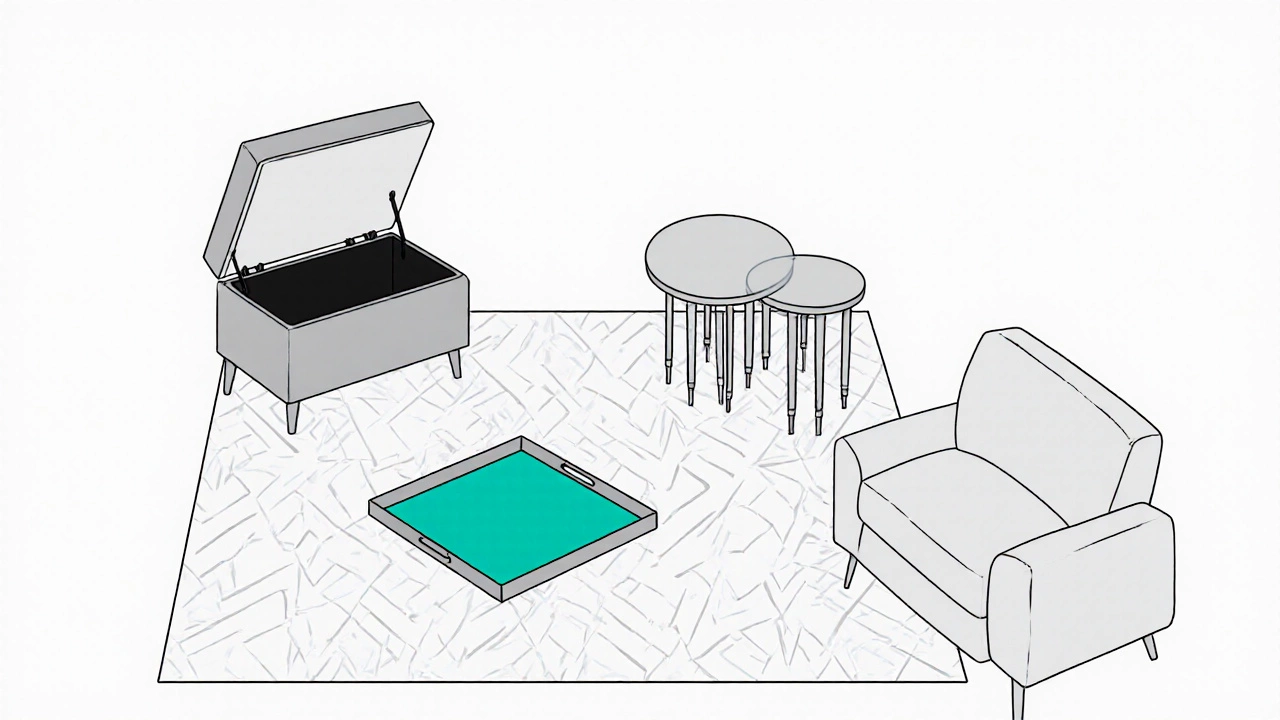
How a Coffee Table Interacts with Other Living‑Room Pieces
Understanding the relationship between a coffee table and surrounding furniture helps you decide placement or removal. Below is a quick guide:
- Sofa - The coffee table should sit 30‑45 cm away, creating a comfortable reach zone.
- Rug - Ideally, the rug extends under the table by at least 15 cm on all sides for visual cohesion.
- TV Stand - Keep the table low enough that sightlines to the screen aren’t blocked; a glass top can reduce visual weight.
- Storage Ottoman - When used together, they create layered storage without crowding the floor.
- Side Chair - Pairing a chair with a coffee table creates a semi‑formal conversation nook.
- Lighting - A table lamp or floor lamp positioned near the coffee table improves task lighting for reading or board games.
When you align these pieces properly, the coffee table enhances flow rather than hinders it.
Design Tips: Making the Most of a Coffee Table (If You Keep One)
Even if you decide a coffee table belongs in your living room, you can optimise its impact:
- Choose the right shape. Round tables eliminate sharp corners and promote better traffic flow.
- Pick a material that matches your vibe. Glass feels airy; reclaimed wood adds warmth; metal offers an industrial edge.
- Incorporate storage. Look for tables with drawers or a lower shelf for magazines and blankets.
- Use the surface wisely. Keep clutter minimal - a single vase, a stack of books, and a remote are enough.
- Layer with textiles. A small runner or woven mat can soften the hard surface and define the coffee‑table zone.
These tricks ensure the table feels intentional, not an afterthought.
Quick Checklist: Do I Need a Coffee Table?
- Clearance of at least 45 cm around seating?
- Frequent use for drinks, games, or décor?
- Style leans toward minimalist or maximalist?
- Room size larger than 20 m² (215 sq ft)?
- Desire for extra storage or visual anchor?
If you tick most boxes, keep the coffee table. If not, experiment with one of the alternatives above and see how the room feels.
Can I replace a coffee table with an ottoman?
Absolutely. An ottoman with a lift‑top offers storage, extra seating, and a surface for drinks. It’s especially handy in small apartments where every piece must serve multiple roles.
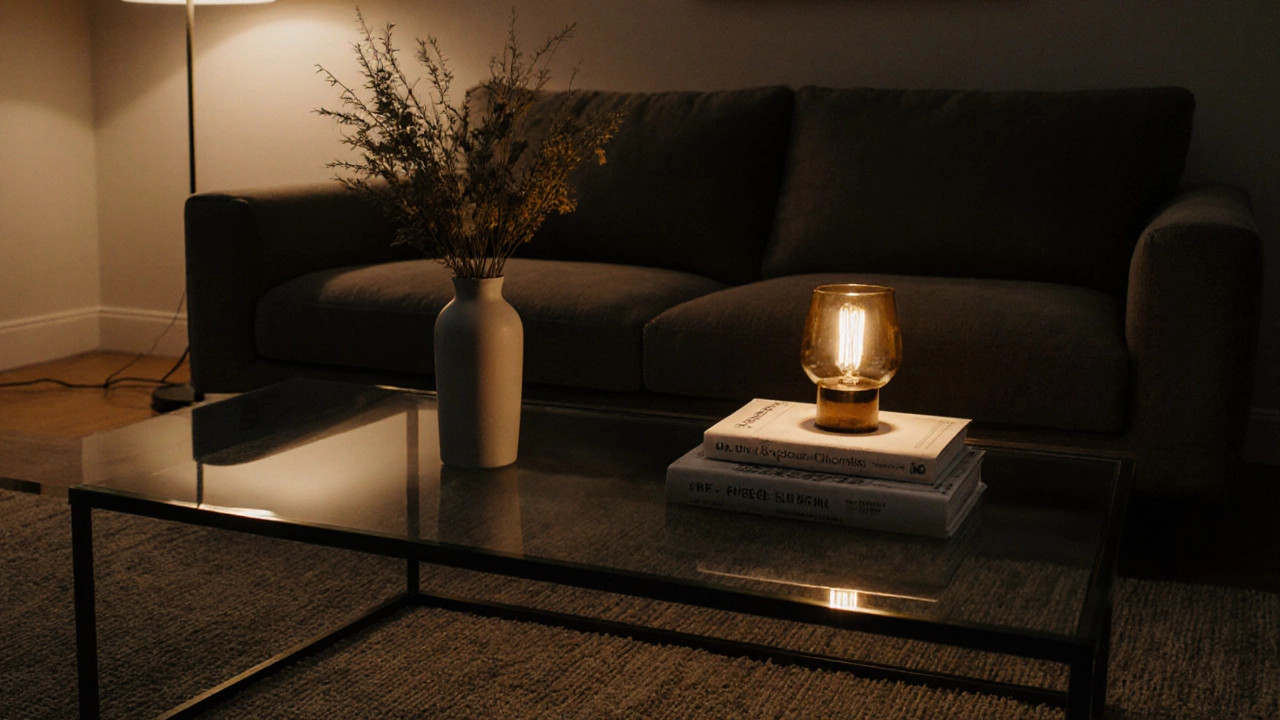
Is a glass coffee table practical for families with kids?
Glass looks sleek, but it scratches easier and can be dangerous if it shatters. If you have active children, consider tempered glass or switch to a wooden or metal option with rounded edges.
What height should a coffee table be?
Standard coffee tables sit 40‑45 cm (16‑18 in) tall, roughly the same height as the seat cushion of a sofa. This makes it easy to reach without straining.
Do I need a rug under a coffee table?
A rug isn’t mandatory, but it helps define the coffee‑table zone and protects floors from scratches. Choose a rug that extends at least 15 cm beyond the table on all sides.
What are the biggest space‑saving tricks for a tiny living room?
Go for nesting tables, wall‑mounted fold‑out shelves, or a storage ottoman. Keep the coffee‑table footprint low, choose transparent materials like glass, and use multi‑functional furniture that doubles as seating or storage.
